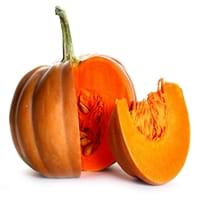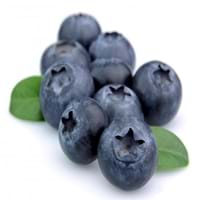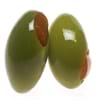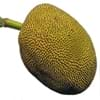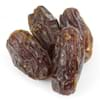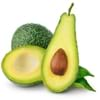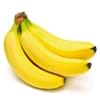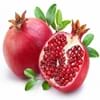Health Benefits
Arthritis treatment, Cancer prevention, High Cholesterol Regulation, Lower blood pressure, Helps Prevent cataract, Prevents gall stones, Ulcer treatment, Weight loss properties
Cancer prevention, Heart care, Increases metabolic rate, Strengthening of bones, Treatment of skin Diseases
General Benefits
Boosts respiratory health, Eliminate parasites and infections, Protects against birth defects, Strengthens bones
Anti oxidant properties, Boosts immune system, Digestive aid, Eye care, Improves blood circulation, Sore throat treatment
Skin Benefits
Heals sunburn, Hydrates skin, Skin rejuvenation
Anti-aging benefits, Reduces wrinkles, Skin rejuvenation, Treatment of skin diseases
Hair Benefits
Regulates hair growth
Protects hair
Allergy Symptoms
Abdominal cramps, Anaphylaxis, Digestive Problems, Dizziness, Eczema, Fainting, Hives, Inflammation, Itching, Tingling sensation in wrist and face, Vomiting, Wheezing
Abdominal pains, Coughing, Diarrhea, Itching, Runny nose, Sneezing, Swelling of mouth, tongue or lips, Wheezing
Side Effects
Kidney and gallbladder diseases
Allergic reaction
Best Time to Eat
Along with meal, Don't eat after meal, Morning time (before lunch)
Best if taken as a breakfast (or empty stomach), As a snack in the late afternoon, Don't consume at night and before bed, Eat the fresh ones, avoid mixing with any other foods, don't eat after meal., Morning time (before lunch)
Vitamin A (Retinol)
Not Available
Vitamin B5 (Pantothenic Acid)
Not Available
Vitamin B6 (Pyridoxin)
Not Available
Vitamin B9 (Folic acid)
Not Available
Vitamin C (Ascorbic Acid)
Vitamin E (Tocopherole)
Not Available
Vitamin K (Phyllochinone)
Not Available
Lutein+Zeaxanthin
Not Available
Phytosterol
Not Available
Calories in Fresh Fruit with Peel
Calories in Fresh Fruit without Peel
Not Available
Calories in Frozen Form
Not Available
Not Available
Calories in Dried Form
Not Available
Not Available
Calories in Canned Form
Not Available
Season
All seasons
Summer
Varieties
Jarrahdale, Peanut, Lakota, Cow, Sugar, Caribean, Red kuri, Buttercup and Pink lady
Dwarf Huckleberry, Cascade Huckleberry, Mountain huckleberry and Blackwinter Huckleberry
Color
Blue, Green, Orange, Red, White
Blue, Purple, Purplish black
Inside Color
Creamy Yellow
Purple
Taste
Creamy, Soft, Sweet
Sweet
Origin
Mexico
North America
Grows on
Vines
Not Available
Soil Type
Clay loam, Sandy loam, Well-drained
Loamy, Sandy, Well-drained
Climatic Conditions
Warm to hot climate
Humid, Warm
Facts about
- The name pumpkin has its roots in the Greek word ‘pepon’, meaning ‘large melon’.
- The largest pumpkin ever grown weighed 1,140 pounds.
- Pumpkins were once known for removing freckles & curing snake bites.
- "I'm your huckleberry" is a way of saying that one is just the right person for a given job.
- The phrase "a huckleberry over my persimmon" was used to mean "a bit beyond my abilities".
Top Producer
China
United States of America
Other Countries
Egypt, India, Indonesia, Iran, Italy, Mexico, Russia, Spain, United States of America
Canada
Top Importer
United States of America
Canada
Botanical Name
Cucurbita maxima
Gaylussacia brachycera
Synonym
Cucurbita pepo, Squash
Not Available
Subkingdom
Tracheobionta
Tracheobionta
Division
Magnoliophyta
Magnoliophyta
Class
Magnoliopsida
Magnoliopsida
Subclass
Dillenhidae
Asteridae
Order
Cucurbitales
Ericales
Family
Cucurbitaceae
Ericaceae
Genus
Cucurbita
Gaylussacia
Species
Cucurbita mixta
G. brachycera
Generic Group
Not Available
Heath
Difference Between Pumpkin and Huckleberry
We might think that Pumpkin and Huckleberry are similar with respect to nutritional value and health benefits. But the nutrient content of both fruits is different. Pumpkin and Huckleberry Facts such as their taste, shape, color, and size are also distinct. The difference between Pumpkin and Huckleberry is explained here.
The amount of calories in 100 gm of fresh Pumpkin and Huckleberry with peel is 26.00 kcal and 37.00 kcal and the amount of calories without peel is 30.00 kcal and Not Available respectively. Thus, Pumpkin and Huckleberry belong to and category.These fruits might or might not differ with respect to their scientific classification. The order of Pumpkin and Huckleberry is Cucurbitales and Ericales respectively. Pumpkin belongs to Cucurbitaceae family and Huckleberry belongs to Ericaceae family. Pumpkin belongs to Cucurbita genus of Cucurbita mixta species and Huckleberry belongs to Gaylussacia genus of G. brachycera species. Beings plants, both fruits belong to Plantae Kingdom.
